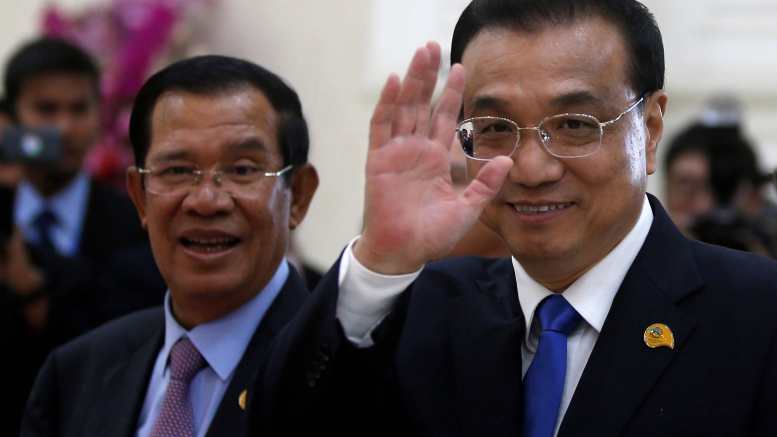Industrial development meets environmental risk at the Lancang Mekong Cooperation Summit
The Lancang Mekong Corporation Summit unlocked more funding for the Mekong River region. But not all the outcomes will be positive.
By Yasmin Rasidi
The second Lancang Mekong Cooperation Summit (LMC) concluded in January. Six national leaders met in the capital of Cambodia, Phnom Penh. The six leaders were from countries situated alongside the Mekong River. Chinese Prime Minister Li Keqiang was among them. They signed an agreement on the development of the area.
The LMC summit brought China, Laos, Vietnam, Thailand, Myanmar, and Cambodia together. The leaders discussed the issues of water management, connectivity, and industrial production capacity.
The meeting produced two significant cooperation documents. The leaders created a five-year action plan on Lancang Mekong. They also signed the Pnomh Penh declaration of the second Lancang Mekong Cooperation.
LMC was a success after its 2015 launch
China launched the LMC in 2015. The first bi-annual meeting took place in Sanya, China. The first summit produced a 26-point statement. The statement focussed on institutional connectivity, economic cooperation and linkages. The nations also formed a partnership on non-conventional security issues.
The LMC partnership delivered several large-scale industrialisation projects in the Mekong region. The six nations worked together. They worked on the Lancang-Mekong Environmental Cooperation Center. They also focused on the Water Resources Cooperation Center. Also, there are more than 20 projects currently underway.

Source: Xinhua.net
China is front and centre of the LMC
China is the most significant investor in the LMC. The five-year plan agreed on at this year’s summit indicates this. China will provide financial support for 132 projects. The country will allocate aid through its LMC Special Fund. Li Keqiang stated Beijing would give a loan of 7 billion yuan (US$1.1 billion). The financial aid was for the development of the region.
The LMC has also implemented social development projects. The meeting in January continued this trend. China pledged to provide Mekong countries with over 2,000 professional education opportunities. The Chinese government will also issue 100 scholarships. The scholarship’s target is students from the region. The scholarships will allow them to study at Chinese universities.
Past summits have also had a positive impact on healthcare in the region. China set up a program called the Brightness Action Scheme in 2015. It has since helped to restore the eyesight of almost 800cataract patients.
The LMC also brings opportunities to the regions young population
The leaders of the six nations along the river will also involve the youth in the development of an area. Youth representatives participated in the third Youth Innovation Competition. The competition focuses on Lancang-Mekong Region Governance and Development. This year, the event took place in Vientiane, the capital of Laos.
The lesser-known event encourages young people to share innovative ideas for development projects. The competition is a forum where young people can learn. They can also apply what they have learnt in the development of their own countries.
But industrialisation poses a risk to the environment
Many hail the LMC as a mechanism to speed up industrialisation in the Mekong area. But, it is not that simple. As industrialisation increases, the risks to the environment increase. Environmentalists criticised this year’s meeting. It failed to address environmental impacts caused by dam construction.
China has built eight dams on the river since the 1990s. It is still planning to build several more. Laos is also planning to construct dams for power generation. The Laos government approved the construction of the dam at Pak Beng February last year. It was the third project from Laos on the Lower Mekong’s mainstream channel. Other dam projects are still underway at Don Sahong in the south and Xayaburi in the northern part.
At the January summit, the six-nation leaders ignored the potential environmental impact. They only focused on the infrastructure projects.
Failure to address the environmental impacts will be costly
The construction of dams will alter the natural flow of the river. An assessment report revealed the impact of the dams on water flow. They could turn the Mekong into a stagnant reservoir. This will decrease the fish population and block fish migration.
Increased industrialisation has already contributed to depleted fish stocks. There have also been issues with flooding and watercourse shift. More than 60 million people rely on the Mekong for food, water and transportation. Any industrialisation projects must consider the environmental impact before construction begins.
A resident of the Mekong voiced his concerns. “We are concerned about development along the Mekong River without transparency and comprehensive studies,” he said.
It could also become a source of conflict in the region
The LMC could lead to conflict if the plan does not reflect all parties’ interests. For example, a Chinese hydroelectric dam built in Cambodia recently released its floodwater. It flooded around 54 houses in a nearby village. Incidents like these could increase tensions rather than cooperation between the Mekong nations.
China is the gatekeeper and financier of the region’s development. It can use this to promote its own agenda at the expense of environmental stability.
The Mekong River must not evolve into the next South China Sea. Future LMC summits must consider the environmental impact of its projects. The river is the life-blood of the region. It is a vital artery which provides food, water, and livelihood to many rural families. It cannot be viewed as a cash cow to milk for industrial gain.
Source: http://www.aseantoday.com/2018/02/industrial-development-meets-environmental-risk-at-the-lancang-mekong-cooperation-summit/


 English
English




